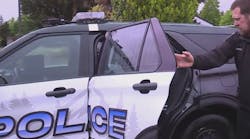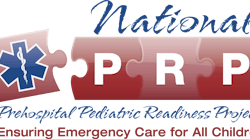I recently extensively researched emergency vehicle driving, including safe vehicle operation and accident prevention. I found that there has been an increase in the number of annual ambulance accidents, fatalities and injuries. Ambulance crews must understand all aspects of vehicle operations and how to safely maneuver ambulances during several phases of driving: predispatch, responding, on location, transporting and getting back in service. If you get into an accident, you become part of the problem, not the solution.
Ambulance configuration
It’s time for organizations to consider new specification options when they purchase a new ambulance as well as to increase driver training and education, to help to minimize accidents.
The United States seems to be one of the few countries that routinely purchases larger ambulances, seemingly because we believe that the bigger the ambulance, the more room to work in, and the more equipment and personnel that can be carried.
Federal Specification KKK-A-1822 and NFPA 1917: Standard for Automotive Ambulances define the minimum requirements for designing, performing and testing new ambulances that are intended for use under emergency conditions, for providing medical treatment and for transporting sick and injured to a medical facility. You also must ensure that your ambulance complies with local/state EMS and Department of Transportation regulations.
Most state EMS certifications require a certain amount of equipment on a BLS or ALS vehicle. However, more equipment might not mean better medical care.
EMS systems must ensure that all equipment is secured correctly and note that most stretcher OEMs recommend a five-point patient restraint system. NFPA 1917 recommends that all equipment that weighs more than three pounds, including the stretcher/mounting system, be secured in a bracket that can withstand 10 G-forces. While an ambulance is moving, all occupants must be restrained.
The traditional “bench seat” must go, as it continues to prove itself to be the death seat in any collision.
In Europe, ambulances are smaller. The captain seat faces forward, as opposed to the case in most American ambulances. Most European ambulances don’t have bench seats, and all equipment is within reaching distance of personnel while they are seated with a seat belt on. Other advantages of a smaller vehicle include better maneuverability, less running costs and maintenance, a lower insurance rate and a lesser price.
Larger vehicles are heavier, so they take longer to stop in an emergency. Their center of gravity is higher, which makes them more vulnerable to a rollover in a collision.
Larger vehicles also are quite wide and tall, and this physical configuration can cause clearance issues.
Insurance carriers say that about $0.53 of ambulance liability insurance applies to accident coverage.
SOGs
Developing good standard operating guidelines (SOGs) for the safe operation of an emergency vehicle is extremely important. These should include training requirements for all drivers, which provides for driving and maneuvering a vehicle at night, as well as regular retraining and driver recertification. Training should inform drivers of how and when to run lights and sirens and of simple procedures, such as driving the apparatus in reverse.
In addition, as per manufacturer and state regulations, daily vehicle checks and regular vehicle and equipment inspections are essential steps.
Despite these precautions, accidents still can occur. Other factors that contribute to ambulance accidents include adverse weather conditions, driver fatigue (an important issue), distracted driving and unsterile cabs. An unsterile cab consists of music playing in the background, distracting interior lighting, and using the radio or cellphone while driving. Ambulance drivers must remain focused and alert while operating the ambulance, to allow them to yield the proper right of way.
Drive safely and defensively. Always wear a seatbelt. Stay safe.






